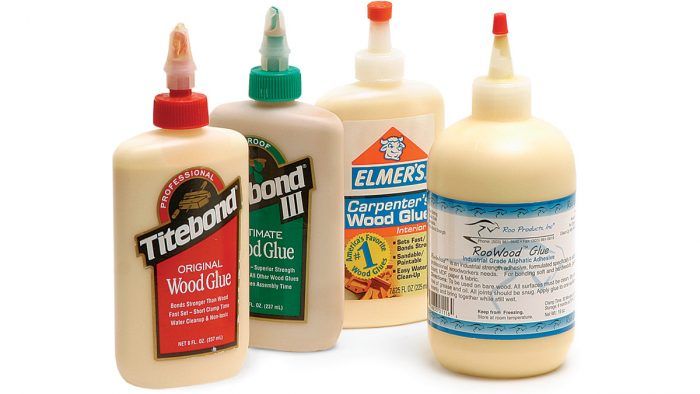Common Woodworking Glues
Yellow PVA glue is the go-to glue for most carpentry work, but several other common adhesives excel in certain situations.

In trim work, glues are used to secure joints, especially to keep miters tight. While there are many types of glue available, four types are especially useful.
Aliphatic resin (“yellow” or “PVA”) glues have become the most commonly used woodworking glue. As a rule they are stronger and set up faster than the similar white glues. However, because white glues set up more slowly, this allows a little more flexibility and a more relaxed pace when gluing up large or complicated assemblies.
Cyanoacrylate (“super” or “instant”) glues are a lifesaver on the job for such things as gluing edge splinters and splits in the wood. They are strong, have reasonably good gap filling ability and when used with an accelerator set almost instantly. Read the precautionary warnings and wear gloves and eye protection when using these glues.
Polyurethane glues are a relatively new product. I have not found them to be any better than yellow glue for interior carpentry. Polyurethane glues have some gap filling qualities, owing to its tendency to foam when exposed to air and moisture. These are harder to clean off the workpieces and your hands.
Construction adhesive (typically available in caulking tubelike applicators) is a great product. Though it takes a while to set up, it’s great for filling in behind a cavity or gluing material to an irregular surface. Once dried it is extremely strong. Most of the brands are petroleum based, however, so avoid the fumes.
| TRADE SECRET: When using natural finishes you must remove all the glue from the surface or you will see it under the finish. Sometimes it’s easier to let the glue dry and then scrape it off, instead of smearing it over a wider surface with a wet rag. You can sometimes use |
Excerpted from Trim Complete: Expert advice from start to finish by Greg Kossow
Available in the Taunton Store and at Amazon.com.






